Double Element Thermostats – Non Simultaneous Operation
Non-simultaneous means that only one of the heating elements will heat at a time. NEVER turn on power to the water heater unless it is full of water and has been purged of air from a hot water faucet.
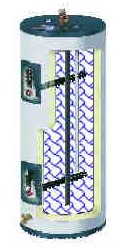 | (1) Upper thermostat is the controlling thermostat. When tank is filled with cold water, or tank runs out of hot water, the upper thermostat will demand heat and turn on the upper heating element. Cold water enters the bottom of the tank through the dip tube. |
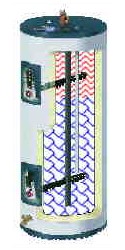 | (2) The water in the top of the tank is heated. Since heat rises, only the water at or above the heating element gets hot. When you run out of hot water, the upper thermostat and element attempt to keep up with the demand. |
 | (3) When the water in the top of the tank reaches thermostat setting, it will automatically turn off and transfer power to the lower thermostat. The lower thermostat, demanding heat from the cold water, turn the lower heating element on. Only one thermostat has power and only one heating element can heat at a time. |
 | (4) The water in the bottom area (roughly the bottom 2/3 of the tank) is heated as the lower heating element and thermostat operate. |
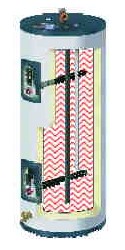 | (5) When all of the water in the bottom of the tank is heated to the thermostat settings, the bottom heating element is turned off. Both thermostats are satisfied and the tank is in ‘stand-by’ mode. |
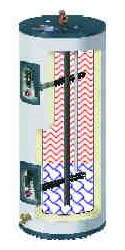 | (6) As hot water is drawn from the tank, it is replaced by cold water from the dip tube. The cold water enters the bottom of the tank and the lower thermostat senses a heat change. The lower heating element will heat the incoming cold water. If you use all the hot water in the tank, the upper thermostat will demand heat and withdraw power from the bottom of the tank. |
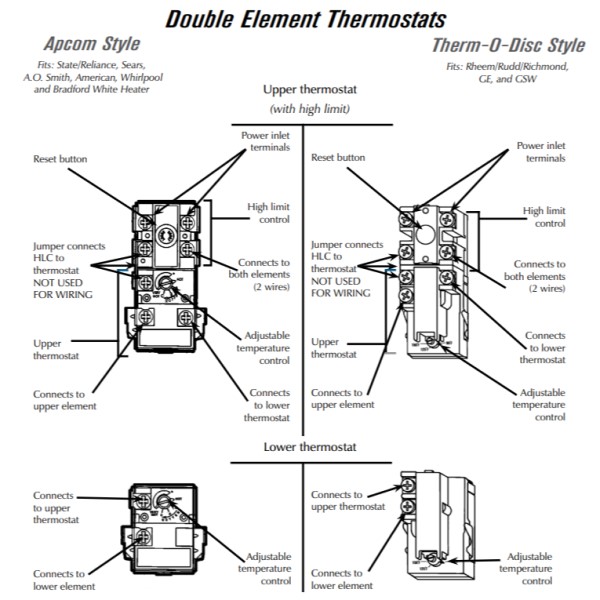
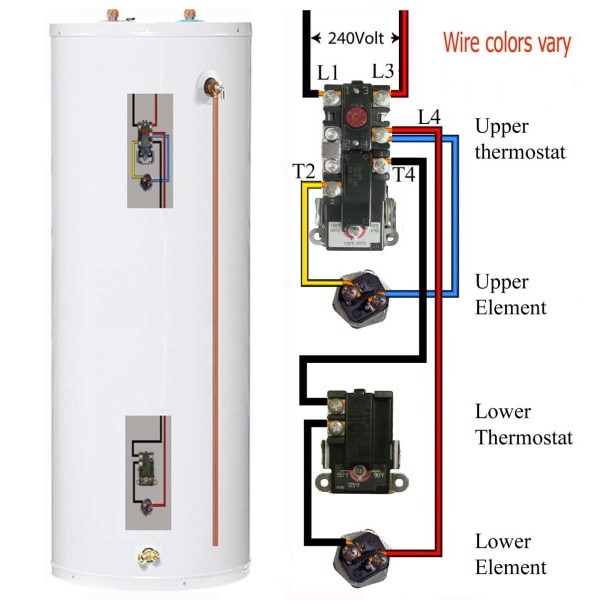
Upper or Lower Failure?
- Upper Thermostat Failure – If your upper thermostat or upper heating element is bad, the water heater will stop heating water entirely. Since the upper thermostat controls the lower thermostat, when the upper fails, the lower never turns on.
- Lower Thermostat Failure – If your lower thermostat or lower heating element is bad, you’ll either notice the hot water is lukewarm or the hot water quickly runs out. This is because the upper thermostat will signal the heating element to heat the top 1/3 of the water in the tank, but the lower thermostat is faulty and unable to turn the lower heating element on.
Testing Elements With Power Turned Off
- Set multimeter dial to the lowest or Rx1k, that is, resistances times 1000Ω.
- You must remove one wire from the element to be tested.
- If your element is 3500-watt at 240v, the multimeter will read 16Ω.
- If your element is 4,500-watt at 240v, the multimeter will read between 12 — 13Ω.
- If your element is 5,500-watt at 240v, the multimeter will read between 10 — 11Ω.
Testing Element Power Turned On
- Set multimeter to A/C Volts
 | If you have 240v at this point, the breaker and wiring is working properly. |
 | If you have 240v at this point, the reset button is on and working properly. |
 | If you have 240v at this point, the upper t-stat is calling for heat to the upper element. If you have no hot water, change the element. If you are getting some heat. Check the bottom element |
| If you have no hot water, test for 240v at the upper element. If you have 240v at upper element and no heat, the element is bad. Testing for 120v on each side can give you a misreading. | |
